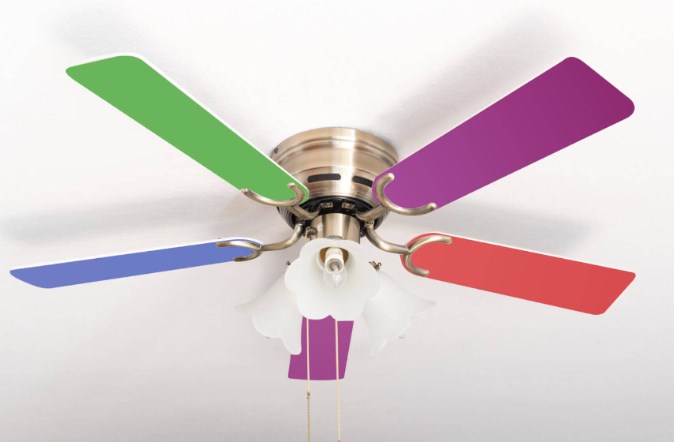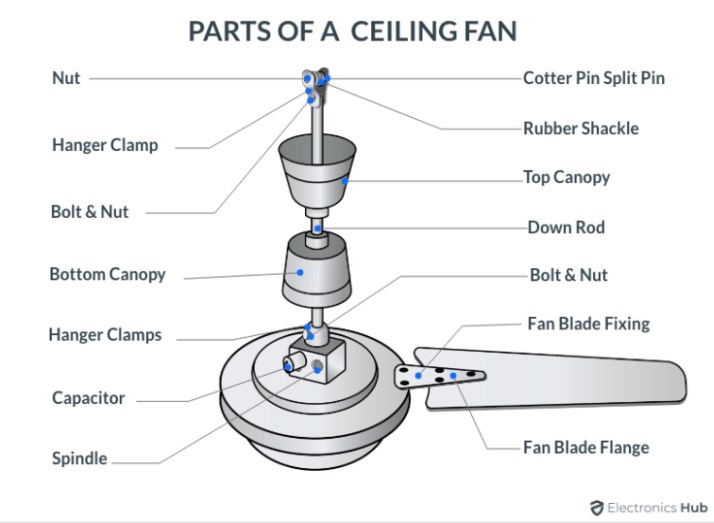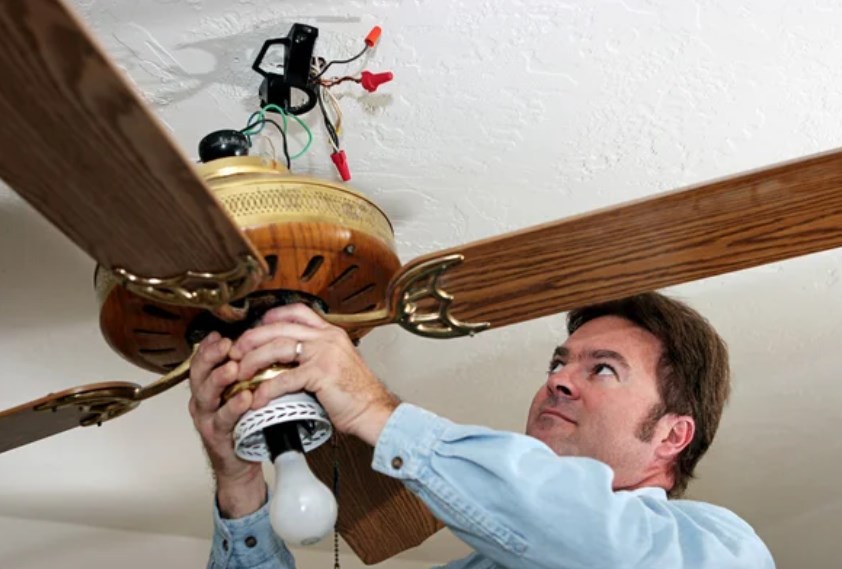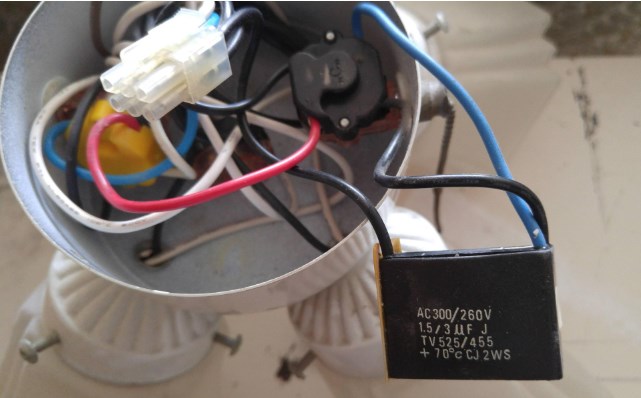OUTLINE:
Why Ceiling Fans Need Capacitors?
 224
224Ceiling fans are an integral part of our homes and offices, offering cost-effective and energy-efficient solutions for maintaining a comfortable temperature. However, many are unaware of the crucial role played by the capacitor in the operation of a ceiling fan. Each fan motor capacitor has specific parameters, making it essential to understand their significance. In this post, let's explore the world of Ceiling Fan Capacitors together.

Let’s talk about the electric parts of the ceiling fan.
- The stator, which remains stationary, houses the main winding and auxiliary winding. It is securely held in place by a shaft or rod pipe.
- The rotor is the rotating part of the ceiling fan, to which the blades are attached. Similar to a squirrel cage rotor, it contains copper or aluminum bars or windings.
- For controlling the fan speed, a regulator comes into play. In the past, regulators were variable resistors connected in series with the motor. However, this led to energy wastage as excess energy was dissipated as heat.

However, without the capacitor, the ceiling fan's motor would struggle to initiate and maintain its operation. The capacitor acts as a catalyst, enabling two fundamental functions: providing starting torque and regulating speed.
Starting Torque:
When a ceiling fan is switched on, it requires an initial push or torque to begin rotating. This initial push is known as starting torque. The capacitor provides the necessary electrical charge to the motor, enabling the ceiling fan to generate the required starting torque.
Speed Control:
In addition to starting torque, the capacitor also helps in regulating the speed of the ceiling fan. The speed at which the fan spins is determined by the frequency of the alternating current (AC) supplied to the motor. By controlling the frequency of the AC, the capacitor influences the motor's speed. Therefore, adjusting the capacitance of the capacitor allows for the modification of the ceiling fan's speed.
While capacitors are essential for proper ceiling fan operation, they are not immune to faults. When a capacitor malfunctions, it can manifest through various symptoms that indicate the need for attention.
Failure to start or slow startup: The ceiling fan may either not turn on at all or have a delayed start when the capacitor is faulty.

- Decreased speed: If the capacitor is not functioning correctly, the ceiling fan may operate at a slower speed than usual, even on the highest setting.
- Buzzing noise: A buzzing sound emanating from the ceiling fan can indicate a faulty capacitor. This noise may persist even when the fan is running.
- Inconsistent speed control: When the capacitor is faulty, the ceiling fan may exhibit irregular speed control. For example, it might run at full speed even when set to the lowest setting.
If any of these symptoms arise, it is crucial to address the issue promptly. Consulting a professional or an electrician to diagnose and replace the faulty capacitor will ensure the ceiling fan's optimal performance and longevity. Ignoring or neglecting capacitor issues can lead to further complications and potential damage to other components of the fan's electrical system.

Understanding the vital role of capacitors in the operation of ceiling fans allows us to appreciate the complexity and precision involved in their design. With their contributions to starting torque and speed regulation, capacitors facilitate the smooth, efficient, and customizable functioning of ceiling fans. By recognizing the symptoms of a faulty capacitor and taking timely action, we can ensure that our ceiling fans continue to provide the comfort and convenience we rely on in our daily lives.
Q&A

Disclaimer: The views and opinions expressed by individual authors or forum participants on this website do not represent the views and opinions of Chipsmall, nor do they represent Chipsmall's official policy.

share this blog to:

